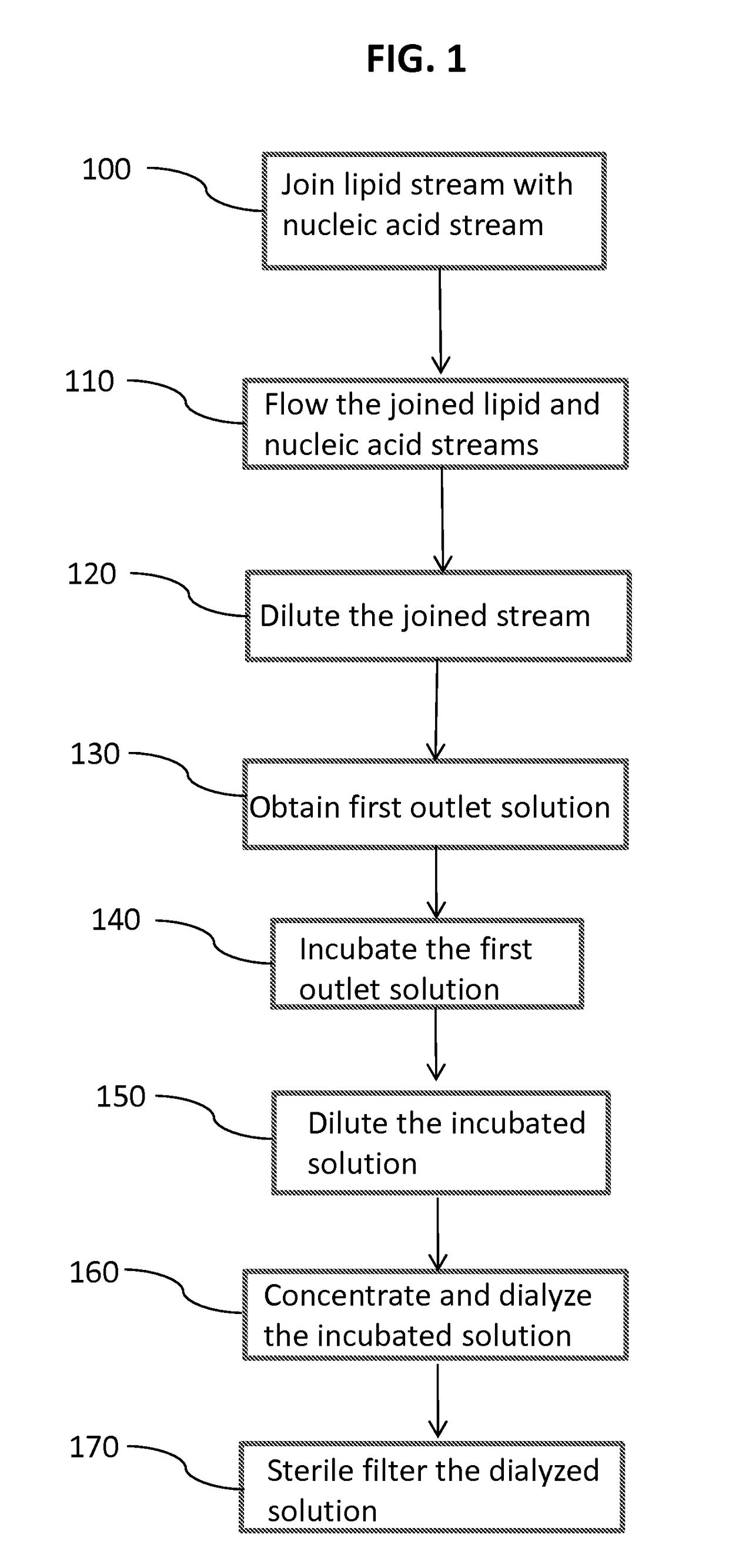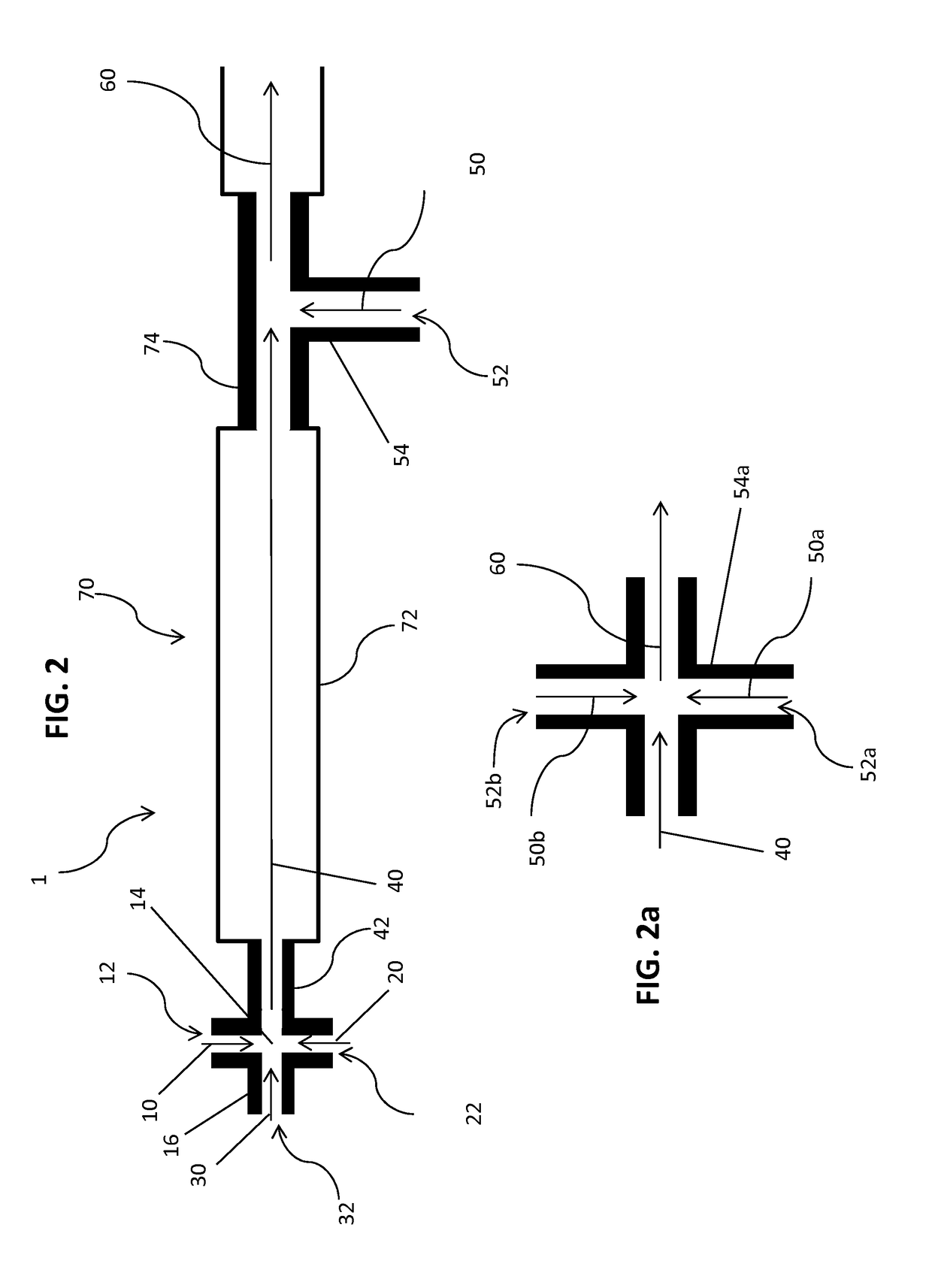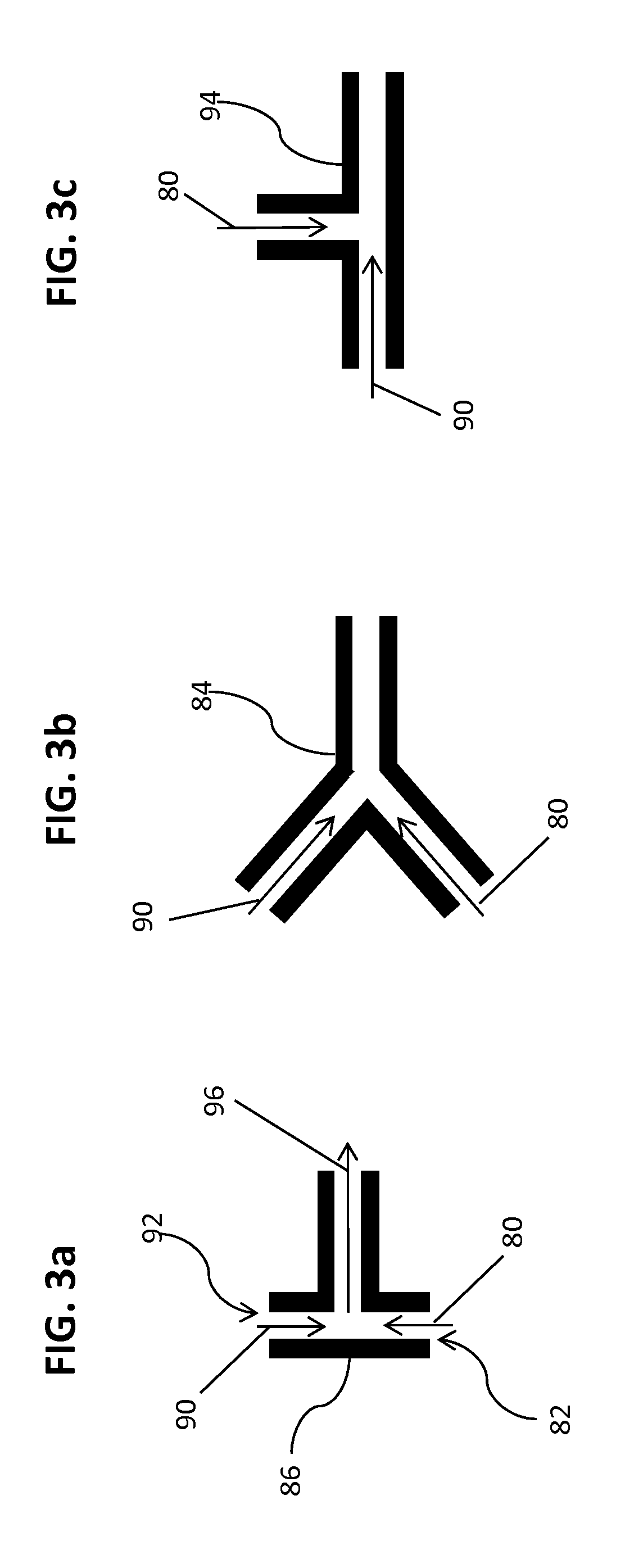Method of encapsulating a nucleic acid in a lipid nanoparticle host
a nucleic acid and host technology, applied in the field of encapsulation of nucleic acid nanoparticles, can solve the problems of increasing the risk of toxic effects and side effects, affecting the delivery of biologically active agents to subjects, and affecting the quality of life of subjects, so as to achieve long-term stability
- Summary
- Abstract
- Description
- Claims
- Application Information
AI Technical Summary
Benefits of technology
Problems solved by technology
Method used
Image
Examples
process examples
6.0 Process Examples
6.1 siRNA Lipid Formulations
[0302]The encapsulated siRNA lipid nanoparticles were formed by mixing solutions of lipids dissolved in ethanol with siRNA dissolved in a citrate buffer by the systems and apparatus generally shown in FIGS. 2-3b, and described generally above. Mixing chambers were used having passages with inner diameters of 0.5, 1.0, or 2.0 mm. The processing chambers had lengths of from 50 mm to 1000 mm. The dilution chambers had passages with inner diameters equivalent to or of at least to 2 times that of the mixing chamber about 0.5 or 1.0 or 2.0 or 4.0 mm. The lipid solution contained a cationic lipid, a helper lipid (cholesterol), a neutral lipid (DSPC) and a stealth lipid.
[0303]The concentrations of total lipids were either 16.7 mg / mL or 25 mg / mL. The total lipid to siRNA ratio for these experiments was about 18.3:1. The concentration of siRNA solutions were 0.225, 0.3, 0.3375, or 0.45 mg / mL in a sodium citrate: sodium chloride buffer with pH 5....
PUM
| Property | Measurement | Unit |
|---|---|---|
| Fraction | aaaaa | aaaaa |
| Fraction | aaaaa | aaaaa |
| Fraction | aaaaa | aaaaa |
Abstract
Description
Claims
Application Information
 Login to View More
Login to View More - R&D
- Intellectual Property
- Life Sciences
- Materials
- Tech Scout
- Unparalleled Data Quality
- Higher Quality Content
- 60% Fewer Hallucinations
Browse by: Latest US Patents, China's latest patents, Technical Efficacy Thesaurus, Application Domain, Technology Topic, Popular Technical Reports.
© 2025 PatSnap. All rights reserved.Legal|Privacy policy|Modern Slavery Act Transparency Statement|Sitemap|About US| Contact US: help@patsnap.com



